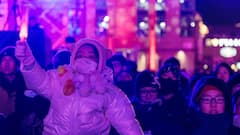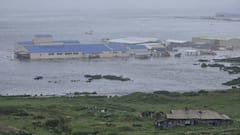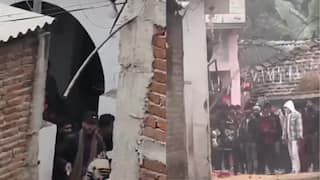Singapore To Discard COVID-19 Border Safety Measures, Will Take Its Disease Alert To 'Lowest'
Singapore will discard all COVID-19 border safety measures on Monday. By doing this, the nation will be taking down its disease alert to its 'lowest' level.

Singapore will scrap all COVID-19 border safety measures from next Monday when the country steps down its disease alert to its lowest level. This is due to the improving pandemic situation globally and the low impact of imported cases on Singapore's healthcare capacity said the Ministry of Health (MOH) on Thursday. Singapore will also step down its disease alert to its lowest level since the COVID-19 pandemic started three years ago, with face masks no longer mandatory on local public transport as well as at some healthcare and residential care settings from Monday.
Once the border measures are scrapped, all travellers, including those who are not vaccinated, will not have to show proof of a negative pre-departure test before entering Singapore.
Unvaccinated visitors will also no longer have to purchase COVID-19 travel insurance.
Still, Singapore is prepared to reintroduce restrictions under its Vaccinated Travel Framework if there are "international developments of concern", Channel News Asia reported quoting the ministry.
This includes the emergence of new severe variants or signs of Singapore's healthcare system coming under strain from imported cases.
Travellers will also continue to be screened for infectious diseases such as Yellow Fever, Middle East Respiratory Syndrome (MERS) and Ebola. All travellers, including Singapore residents, will also still have to submit a health declaration via the SG Arrival Card e-service when entering the country.
Travellers should check the Immigration and Checkpoints Authority's website for the latest border measures before entering Singapore, said the health ministry.
However, the Ministry Of Health (MOH) will retain the practice of mask-wearing for visitors, staff and patients in settings where there is interaction with patients as well as in indoor patient-facing areas - like hospitals, clinics and nursing homes.
This will be a MOH requirement rather than mandated under COVID-19 regulations, to better protect patients and healthcare workers from infectious diseases in general, the ministry said in a press release.
Since April last year, Singapore has also maintained a Yellow status - the second lowest tier - under its Disease Outbreak Response System Condition (DORSCON) framework.
From Monday, it will move down to code Green, putting COVID-19 in the same category as the Middle East Respiratory Syndrome (MERS) and the H7N9 bird flu strain.
It was three years ago when Singapore first raised its DORSCON level to Orange on February 7, 2020 and implemented mask-wearing requirements in April 2020.
(This report has been published as part of the auto-generated syndicate wire feed. Apart from the headline, no editing has been done in the copy by ABP Live.)
Related Video
Uttarakhand News: Winter Chill Grips North India; Kedarnath Dham Covered in Snow





































